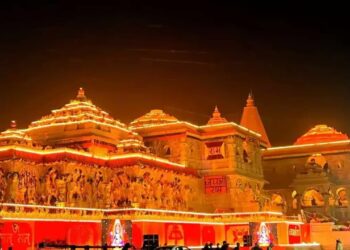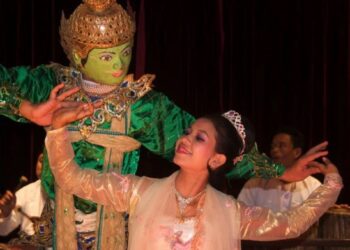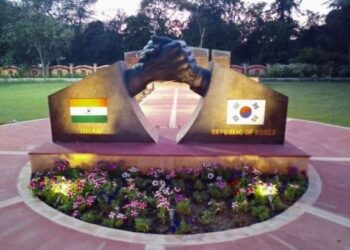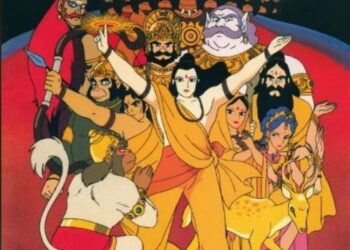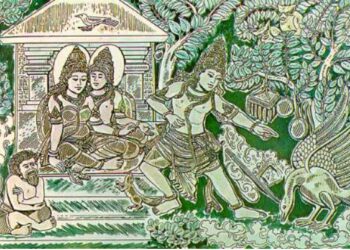The Khmer Reamker, a Cambodian epic poem, is a captivating rendition of the Indian ancient Sanskrit epic, the Ramayana. The Khmer Reamker, which follows the protagonist Prince Preah Ream on his quest to rescue his beloved wife Neang Seda from the clutches of the evil giant Reap (Ravana), holds a special place in Cambodian culture.
Rooted in the Ramayana, the Khmer Reamker brings to life a tale of love, trust, the balance between good and evil, the temptation to commit wrong, and the guilt arising from unkept promises.
Historical Roots and Evolution
According to Judith M. Jacob, multiple Khmer poets contributed to the composition of the Reamker, starting in the 16th or 17th century. Jacob’s translation of the Khmer text from the Cambodian Buddhist Institute in Phnom Penh into English sheds light on this monumental work.
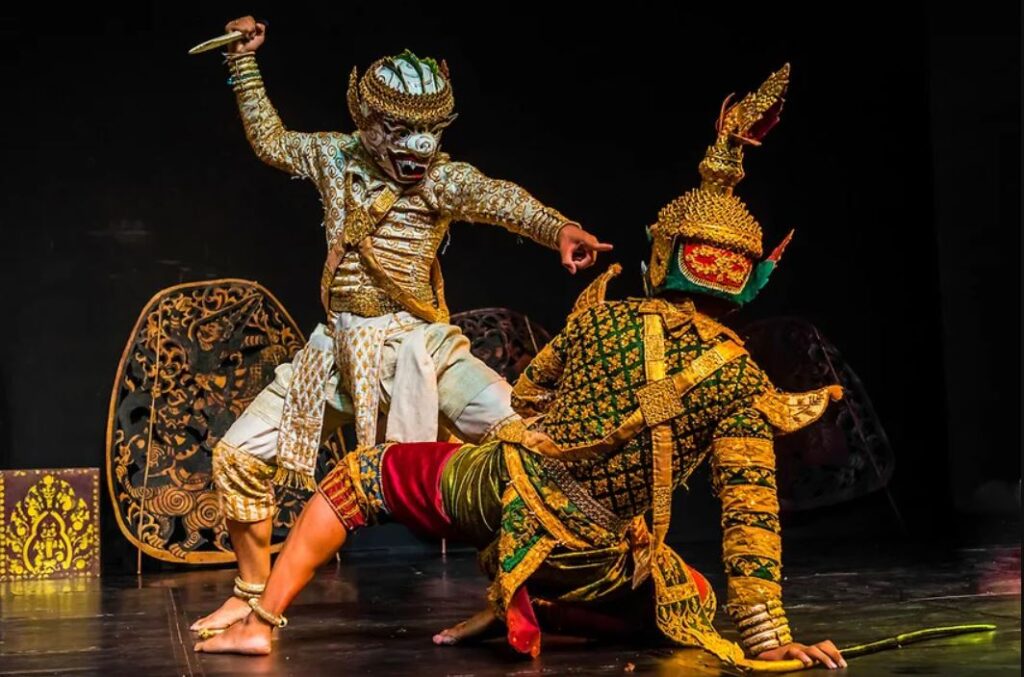
The Reamker was composed in verses, with two distinct compositions, each possibly from a different era. The first composition, which may predate the 16th century, includes the contest for a magic bow, the marriage of Preah Ream and Princess Seda, the banishment, abduction, and the battle against the evil Reap.
Themes and Storyline
The Reamker explores timeless themes such as love, trust, fidelity, and revenge. It narrates the exile of Preah Ream, driven by a queen’s desire to see her son crowned as king. Caught between fidelity to a promise and traditional precedent, King Tusaroth, Preah Ream’s father, faces a dilemma that ultimately leads to Preah Ream’s self-imposed exile into the deep jungle.
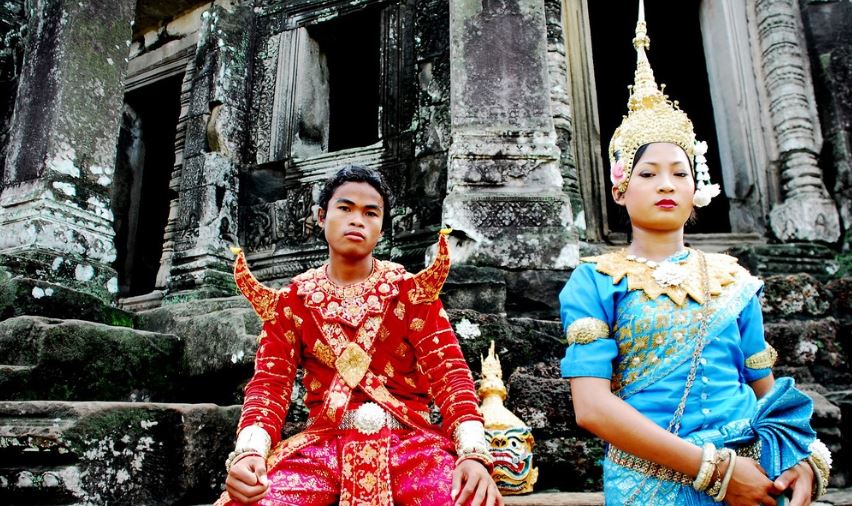
The narrative touches upon the intense familial and societal dynamics, making it not just a mythological tale but a reflection of human complexities.
Composition and Evolution
The first composition, with its contest for a magic bow, banishment, and the defeat of Reap, emphasizes the balance of good and evil and the triumph of righteousness. The second composition, from the 16th or 17th century, adds layers to the story, exploring the reunion of Preah Ream and Princess Seda, the challenges of trust and fidelity, and Preah Ream’s quest to regain Princess Seda’s heart.
Cultural Significance
The Reamker remains a fundamental source of Khmer culture, influencing classical dance and Royal Ballet performances, as well as appearing in wall paintings and carvings at iconic sites like Angkor Wat, Banteay Srey, and the Royal Palace.
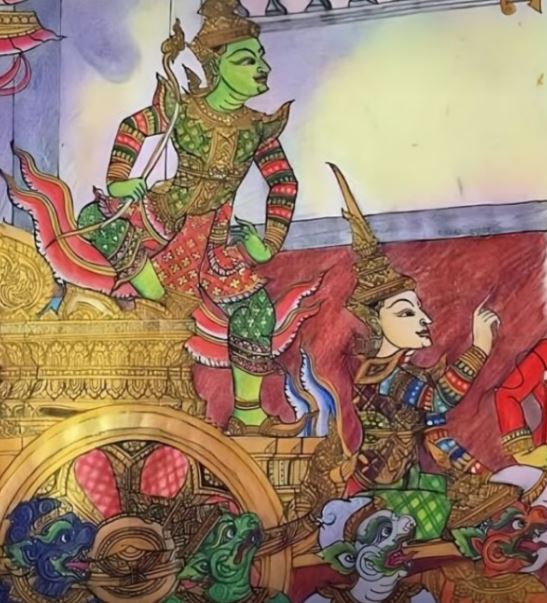
Operatic dances like Lakhon Khol, the masked opera dances, draw inspiration from the legends of Preah Ream, Preah Leak, Princess Seda, Hanuman, and Reap.
Oral Tradition and Adaptations
The epic’s origins suggest an oral tradition passed down through generations, subject to retelling, revision, and adaptation. The story was traditionally shared at Buddhist pagodas, where monks copied the narrative from palm leaves, sometimes adding their interpretations or creating new elements for performance. An example is the popular Cambodian story of Hanuman and Sovanmacha, not found in the original 16th/17th-century Khmer poetry book but added through word of mouth or created for performance.
Cultural Symbolism
The Khmer Reamker portrays Preah Ream as the god Narayama or Vishnu in human form, embodying the qualities of a protector god who quells evil, preserves dharma (righteousness), and protects the balance between good and evil. The narrative showcases a battle between the forces of goodness, represented by Preah Ream and the monkeys, and the evil forces led by Reap and the ogres.
Impact on Performing Arts
The Reamker serves as a wellspring of inspiration for various genres of performance in Cambodia. Classical dance-drama, all-male masked dance-drama, and shadow puppet plays all incorporate episodes from the Reamker into their repertoire.
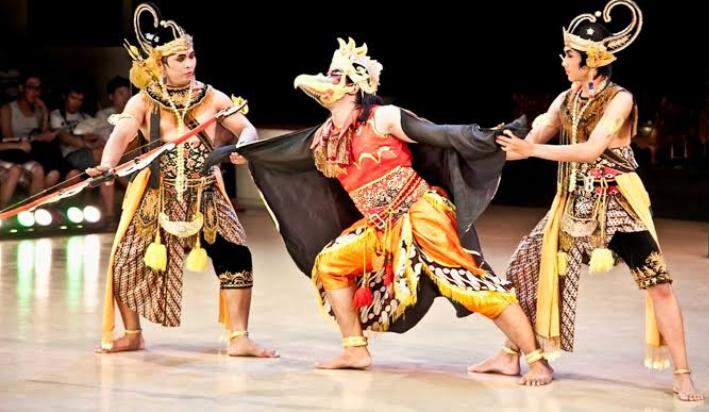
Notably, the Reamker is traditionally the exclusive story performed by all-male masked dance-drama and large shadow puppet play troupes, each focusing on different episodes but sharing thematic elements.
In conclusion, the Khmer Reamker stands as a vibrant and culturally rich adaptation of the Ramayana, deeply rooted in Cambodian tradition. Its enduring legacy is evident not only in literature but also in the diverse forms of performing arts and visual representations, making it an integral part of Cambodia’s cultural identity. The complex interplay of human emotions and societal dynamics within the epic continues to resonate, ensuring the Reamker’s significance for generations to come.


